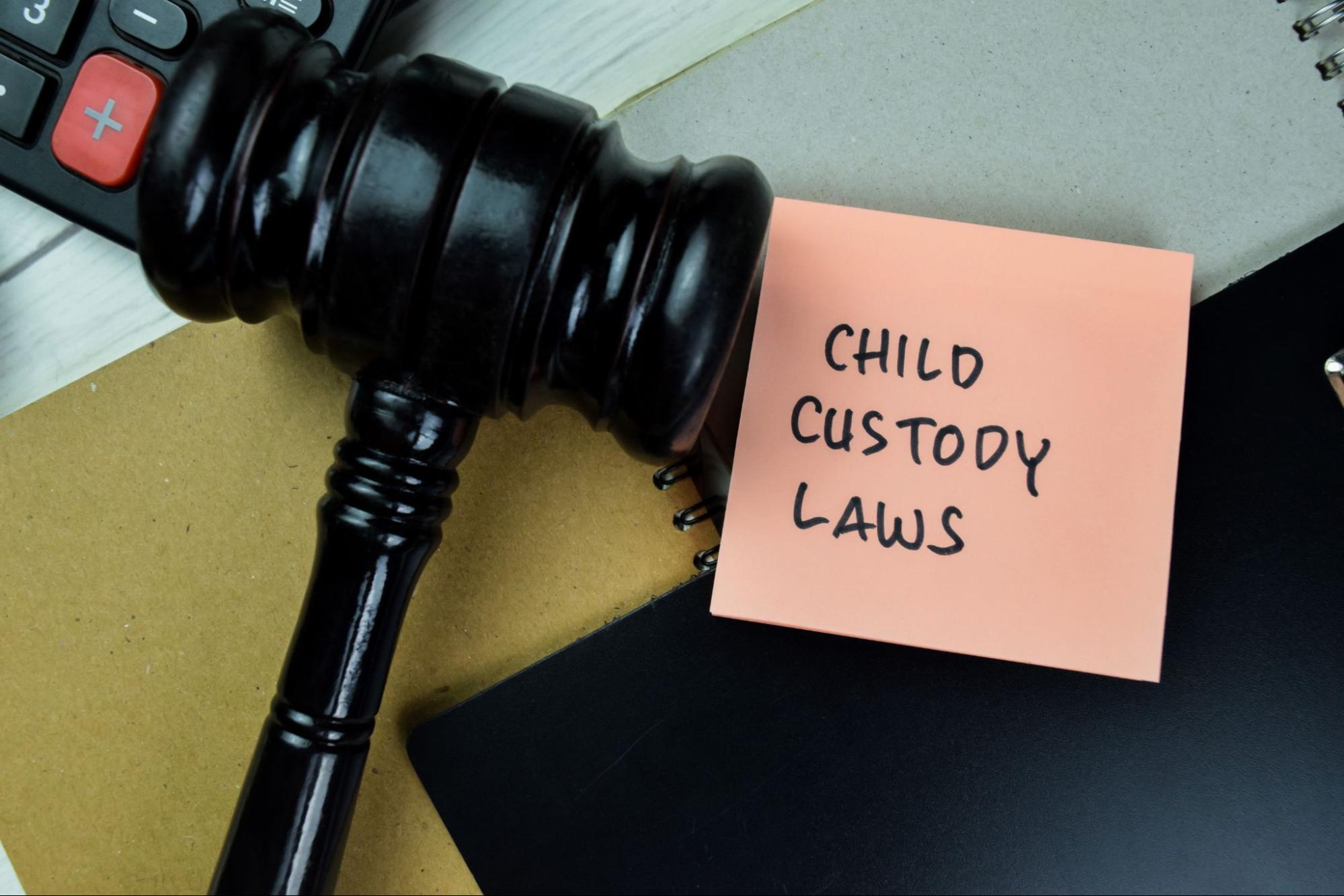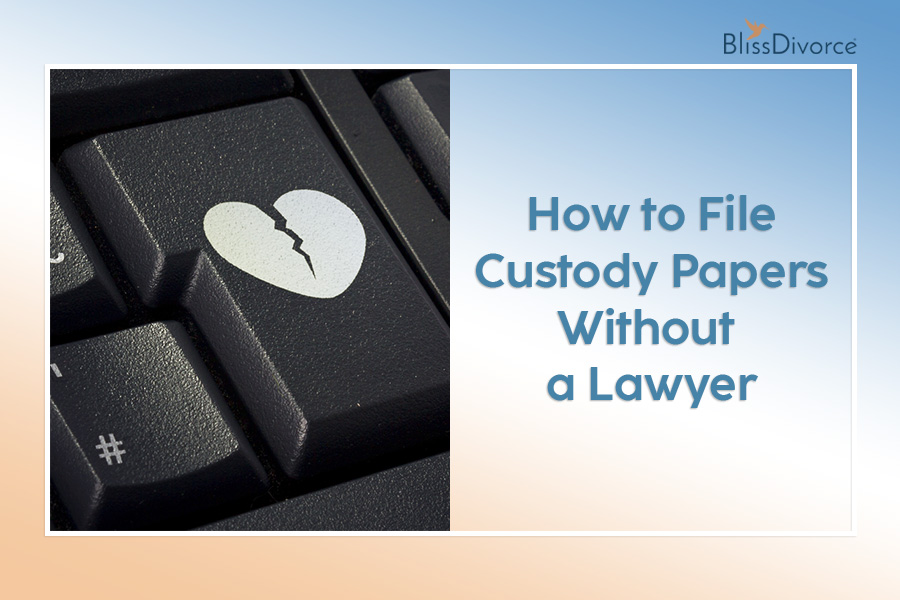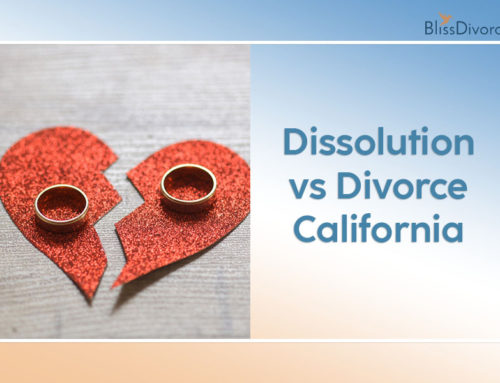Child custody in California can be an expensive and lengthy process. This is especially true when the parents disagree and involve lawyers, which may further complicate the case. So, how to file custody papers without a lawyer?
If you and the other parent manage to agree and are willing to work with each other, the filing process is pretty straightforward. So, let’s dive into it!

Source: shutterstock.com/ Photo Contributor: bangoland
How to File Custody Papers Without a Lawyer – Methods
Whether divorce or a child custody case, most people in California, especially large cities like San Francisco, wonder if there is a possibility to avoid involving lawyers. The main reason is that their rates are incredibly high, so most cannot afford them without going into debt.
Before looking for divorce lawyers in San Francisco who can handle your family law case, consider other methods. If you and the other parent are willing to work together, you may file without a lawyer.
You may compile the forms and file them on your own or get the help of an online service that will prepare and file the paperwork for you.
Parenting plans
A parenting plan is a document created by a child’s parents that specifies when they will spend time with both parents and how the parents will make significant life decisions.
A judge and both parents must sign the parenting plan before it becomes an enforceable court order. The parenting plan must include parental responsibility for both physical and legal custody.
Until you and your ex-partner receive a final court order regarding the custody of your child/children, or if you agree on how custody and parenting times should look, write up a parenting plan. The parenting plan should outline the following:
- Where the child will live
- When the child will be with each parent
- How decisions will be made about child welfare issues like health, education and religion
Make important decisions
When you are writing up your parenting agreement, you and your ex-partner must agree on things in your child’s best interest. These include agreeing on custody and parenting time, such as the following:
- Which parent will have legal custody, or if it will be joint? Legal custody tells which parent will have the last say over matters about the children, such as religion, health, education, etc.
- Agree which parent will have physical custody, or if you will share it. Physical custody is who the child physically lives with.
Decide how you will share parenting time, also called visitation. Parenting time outlines how each parent will share the time with the child. This includes holidays, weekends, vacations, etc.
Write up your agreement
After you and your ex-partner agree on all or most things regarding your parenting plan, it is time to put it in a document for court submission. As a cover sheet for your agreement, you use the Stipulation and Order for Custody and/or Visitation of Children (form FL-355).
After you both sign the cover sheet, you can fill out the Child Custody and Visitation (Parenting Time) Order Attachment (form FL-341). In this form, you can mark up all the details of your custody arrangement.
You also have the option to write the parenting plan on your own paper and attach it to the cover sheet. Another helpful form may be the Children’s Holiday Schedule Attachment (form FL-341(C)).
Get the judge’s signature
Before you can file the parenting plan, a judge must sign it first. You may get more information from your local county clerk regarding:
- Where to take the agreement to get a judge’s signature
- How will you receive the signed document back
- The amount of your fee
Generally, it may take several days or weeks before you get the signed copy back. You can either pick it up in person or ask the court to mail it to you. The filing fee is typically $20 if you have already opened a family law case with the court. If not you may need to pay the initial $435 to $450 filing fee. If you cannot afford it, ask for a fee waiver.
Get the signed agreement and give a copy to the other parent
When you pick up the agreement or receive it in your mail, check that it has the judge’s signature. Also, check that it has a stamp in the top corner that says it was filed.
One copy is for you, and give the other copy of the signed and filed agreement to the other parent.
Petition for custody
Petition for custody is another method to start a custody case. You may file the Petition for Custody and Support of Minor Children (form FL-260) to ask for custody and visitation orders.
But this is only applicable under the following circumstances:
- If the parents are married or registered domestic partners and do not seek divorce, legal separation, or annulment but want a court order for visitation and custody.
- The parents are not married and have signed a Voluntary Declaration of Paternity and seek a court order for custody and visitation.
- The parents are not married but share an adopted child and seek a court order for custody and visitation.
- You are the parents of a child in a juvenile case and want a court order for custody and visitation.
Determining Your Eligibility to File Without a Lawyer
If you and the other parent agree on all the terms about custody of your child/children, you may file without a lawyer. But, if the parents disagree on terms like visitation, support, etc., it means the custody case is more complicated.
Generally, in most US states, including California, you don’t need a lawyer to start a custody case. This is because you have the right of self-representation in court. You may agree if you and your ex-partner are willing to work out your differences.
You can do this by going to a mediation service. But if that also fails, you will undoubtedly end up in court. If that happens, you may need to get legal counsel to represent you.

Source: shutterstock.com/ Photo Contributor: Oksana Mizina
Legal Requirements – Gathering Necessary Information and Documentation
Start by filing a family law action in your county’s superior court. It could be an annulment, divorce, or a formal separation. Alternatively, the case may only include child support and custody.
Temporary restraining orders are automatically issued in many family law proceedings. These prohibit, among other things, either party from transferring insurance beneficiaries or transporting the affected child out of state without consent.
You should gather all important information and documents that may help your case, such as the following:
- Your child’s records
- Phone call logs
- Visitation schedules
Completing the required forms
You will need to fill out the following forms:
- Petition for Custody and Support of Minor Children (form FL-260)
- Summons (Uniform Parentage – Petition for Custody and Support) (form FL-210)
- Declaration Under Uniform Child Custody Jurisdiction and Enforcement Act (UCCJEA) (form FL-105/GC-120(A))
You may also ask for child support or payment for legal bills if the other parent is the breadwinner or earns significantly more than you. You should also explain who you believe should have legal and physical custody of your child/children and why.
You can apply for temporary orders and attach documents to your request to provide more details. The following forms may also be useful:
- Child Custody and Visitation (Parenting Time) Application Attachment (form FL-311)
- Children’s Holiday Schedule Attachment (form FL-341(C))
- Additional Provisions – Physical Custody Attachment (form FL-341(D))
- Joint Legal Custody Attachment (form FL-341(E))
- Request for Child Abduction Prevention Orders (form FL-312)
Filing the custody papers with the court
Bring your original paperwork and two copies to the court clerk if you want to file in person. Your documents will be stamped by the clerk, who will also return two copy sets – one for you and one for the other parent.
You will be required to pay fees regardless of the method of filing. The fee for filing with your local county court in California is around $435-$450. Plus, if you ask for any temporary orders, there is an additional fee of $60-$85.
You will be given a date for your initial hearing after filing. If you cannot pay the fee, ask the county clerk for a fee waiver. You may qualify for a fee waiver if you:
- Receive public benefits
- Your income is less than a set amount
- You cannot afford the fee and meet your basic needs
Serving the other parent
The documents, which include a blank responding declaration, must normally be delivered in person by an adult who isn’t involved in the case.
The person who made the delivery must fill out a form – Proof of Service of Summons – later on. The proof of service form must be completed and turned in to the court clerk. A copy of the relevant declaration must be sent to you and filed with the court.
The initial filing process is now complete. The other parent has 30 days to reply. The list of forms the recipient should receive are the following:
- Copies of forms you filed with the court (except any fee waiver forms)
- Blank Response to Petition for Custody and Support of Minor Children (form FL-270)
Blank Declaration Under Uniform Child Custody Jurisdiction Enforcement Act (UCCJEA) (form FL-105 GC-120(A)).
Court procedure – Attending the court hearing
Ensure you bring all your documents to the hearing and keep them safe. You must attend all your court hearings as this shows the judge that you are a responsible parent.
The most important thing to remember is that during custody, the court makes decisions based on what is in the child/children’s best interests. This is why you should ensure to avoid any disputes with the other parent and follow every existing court order.
Post-hearing considerations
After the judge hears both sides and reviews all the forms and documents submitted, they will decide. The judge’s ultimate choice is what they deem best for the child. After the final decision, you may file to change the custody or parenting time order.
Whatever the definite verdict may be, you must be in compliance with the court orders. Also, try to be on civil terms with your ex-partner to ensure your child’s best interests. You will need to co-parent until any minor children turn 18, so it is best to try and get along.

Source: shutterstock.com/ Photo Contributor: Oksana Mizina
Conclusion
These are the steps to follow if you wonder how to file custody papers without a lawyer. The most important thing to remember is to keep calm and think about your child’s best interest first. This will allow you and the other parent to agree without needing lawyers.




